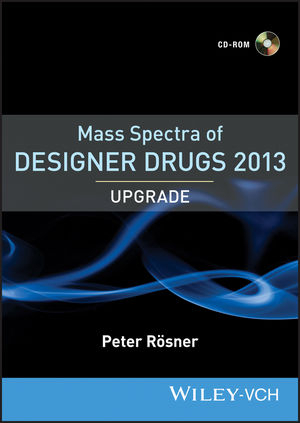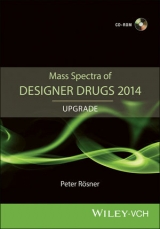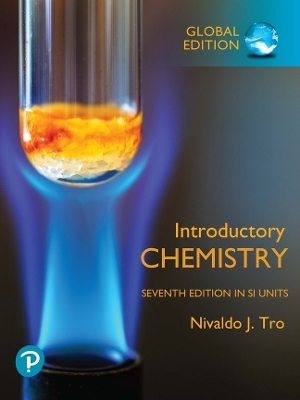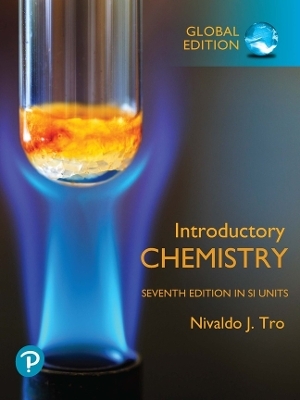
Mass Spectra of Designer Drugs 2013 Upgrade
Wiley-VCH (Hersteller)
978-3-527-33401-8 (ISBN)
- Titel erscheint in neuer Auflage
- Artikel merken
The Designer Drugs 2013 cover the entire range of designer drugs up to December 2012.
Carefully compiled by the mass spectral experts at the Regional Departments of Criminal Investigation in Kiel, Hamburg, and Wiesbaden, Germany, this database includes:
- 15,556 chemical compounds
- 19,037 mass spectra, about 2,859 more than the 2012 edition
- Chemical structures
- Chemical warfare agents, added due to the recent interest in homeland security
- Data taken from both legal and underground literature, providing the most comprehensive picture of these compounds
- Average peaks per spectrum: 170
- Average Quality Index: 941
- Experimental Kovats indices: 11,061
- Calculated Kovats indices
Compound structure:
Number of amphetamines: 1469
Number of methylenedioxyphenethylamines: 666
Number of phenethylamines: 2014
Number of tryptamines: 462
Number of piperazines: 904
Number of opiates: 259
Number of fentanyles: 320
Number of cathinones: 504
Number of phencyclidines: 16
Number of tropines: 97
Number of indoles: 894
Number of barbiturates: 79
Number of cannabinoids: 255
Number of cannabimimetics: 528
Number of steroids: 190
Number of arylpropan-2-amines: 266
Number of arylbutan-2-amines: 433
Number of indane-2-amines: 67
Number of 1-aryl-2-nitro-ethenes: 43
Number of 1-aryl-2-nitroprop-1-enes: 68
Number of 1-aryl-2-nitrobut-1-ene: 44
Number of benzaldehydes: 150
Number of derivatives: 5724
Number of metabolites incl. derivatives: 4136
Number of chemical warfare agents: 71
Number of designer drug precursors: 1158
Number of benzodiazepines: 272
Number of pharmaceutical drugs incl. metabolites: 4460
Number of pesticides: 315
Number of explosives: 53
Number of controlled compounds: 2621
Available Database Formats: ACD; Agilent Chemstation; NIST MSSEARCH; Finnigan GCQ, SSQ, TSQ, ICIS, INCOS, Iontrap, ITS40, Magnum; INCOS; PE Turbomass; Shimadzu QP-5000; Thermo Galactic SpectralID; Varian Saturn;VG Labbase, Masslab; Waters Masslynx; Xcalibur
Peter Rösner (born 1944) studied Chemistry at the University of Kiel (Germany). In 1981 he became head of the toxicology department at the state agency of criminal investigation (Landeskriminalamt) in Kiel, where he focuses on drug identification and structure elucidation with GC/MS methods. Since 1992 he has also been a lecturer for mass spectrometry at the University of Kiel. In 2005, Dr. Rösner received the Jean-Servais-Stas Award from the Society of Toxicological and Forensic Chemistry in honor of his outstanding work in forensic sciences. Thomas Junge (born 1959) studied Technical Chemistry at the University of Applied Science of Lübeck (Germany). Since 1985 he has been a specialist for daughter ion mass spectroscopy in the toxicology department at the Landeskriminalamt in Kiel. His contribution was essential in building a mass spectral daughter ion data base for the structure eludication of new designer drugs. Folker Westphal (born 1965) studied Chemistry at the Universities of Hannover and Kiel (Germany), and also holds a degree as Special Chemist for Toxicology from the University of Leipzig. From 1999 to 2004 he worked at the Institute of Legal Medicine in Kiel as forensic scientist. Since 2004 he is leader of the section "Analysis of Drugs of Abuse and Forensic Toxicology" at the Landeskriminalamt in Kiel. Giselher Fritschi (born 1944) studied Chemistry at the Universities of Mainz and Karlsruhe (Germany). After a postdoc year at the University of Marburg he joined the Bundesgesundheitsamt (Federal Health Office) in Frankfurt. In 1978 he changed to the Landeskriminalamt in Wiesbaden as forensic expert for toxicological analysis, focusing on the structure elucidation of new designer drugs.
| Sprache | englisch |
|---|---|
| Maße | 137 x 195 mm |
| Gewicht | 1 g |
| Themenwelt | Naturwissenschaften ► Chemie |
| Schlagworte | Designerdroge • Droge • Massenspektroskopie • Toxikologie |
| ISBN-10 | 3-527-33401-7 / 3527334017 |
| ISBN-13 | 978-3-527-33401-8 / 9783527334018 |
| Zustand | Neuware |
| Informationen gemäß Produktsicherheitsverordnung (GPSR) | |
| Haben Sie eine Frage zum Produkt? |
aus dem Bereich



